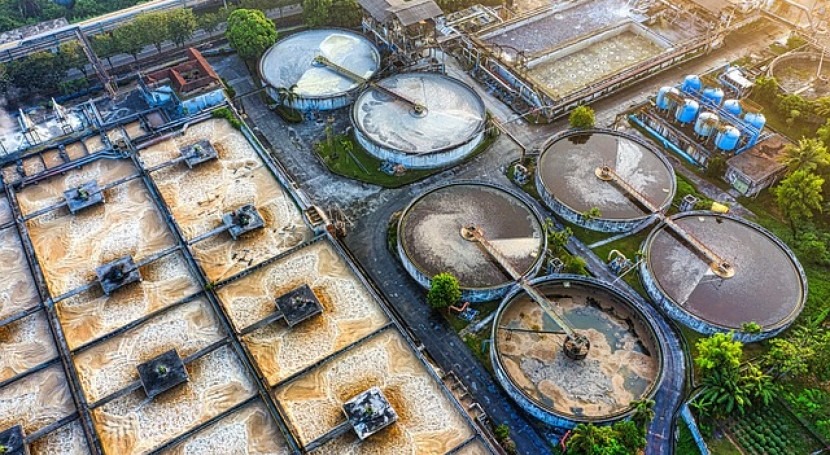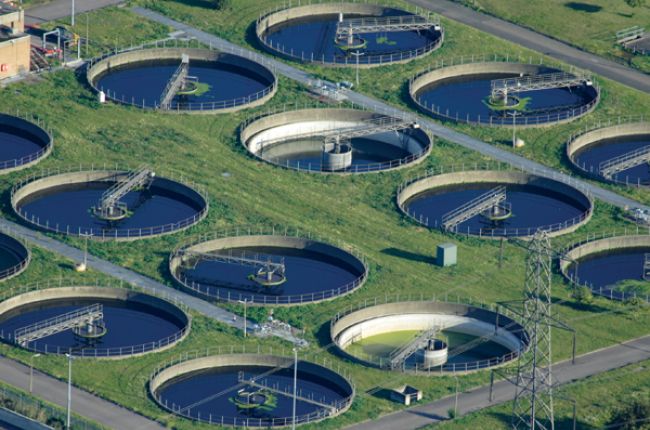Cost-Effective Solutions for Large-Scale Waste Water Treatment Facilities
Cost-Effective Solutions for Large-Scale Waste Water Treatment Facilities
Blog Article
Optimizing Waste Water Treatment Procedures: Approaches for Improved Water Quality and Resource Recovery
In the world of wastewater treatment, the pursuit for enhancing effectiveness and sustainability through process optimization is a recurring pursuit that holds enormous relevance. From sophisticated modern technologies to ingenious source recuperation techniques, the landscape of wastewater therapy is developing swiftly.
Importance of Refine Optimization
Maximizing waste water treatment processes with thorough process optimization is critical for making the most of efficiency and ensuring ecological sustainability. By fine-tuning each action of the treatment procedure, from initial intake to last discharge, water therapy facilities can attain greater degrees of contaminant elimination, minimize energy consumption, and reduce the generation of waste byproducts. Refine optimization involves examining vital efficiency indications, such as hydraulic retention times, sludge retention times, and nutrient degrees, to identify areas for renovation and carry out targeted solutions.
Effective procedure optimization not only improves the general efficiency of drainage therapy plants yet additionally adds to cost savings and governing conformity. By optimizing processes, operators can achieve greater treatment abilities without the requirement for significant facilities financial investments. Additionally, boosted treatment efficiency causes cleaner effluent discharge, decreasing the ecological effect on getting water bodies and ecological communities.

Advanced Treatment Technologies
In the realm of waste water therapy, the application of advanced treatment innovations plays a crucial role in boosting the general efficiency and efficiency of the treatment processes. These cutting-edge technologies use cutting-edge services to resolve intricate contaminants existing in wastewater streams, guaranteeing the removal of contaminants to satisfy stringent water quality requirements. Advanced therapy procedures such as membrane bioreactors, ozonation, progressed oxidation processes, and turn around osmosis make it possible for the detailed removal of impurities, including arising pollutants like drugs and individual treatment products.
Additionally, these technologies promote resource recovery by removing valuable products such as phosphorus, nitrogen, and energy from the wastewater. As an example, progressed nutrient elimination modern technologies can recoup phosphorus and nitrogen for reuse in farming fertilizers, while power recuperation systems like anaerobic digestion can harness biogas for power generation. By integrating innovative therapy modern technologies right into wastewater treatment plants, operators can improve water top quality, lower ecological influence, and relocate towards a more sustainable and resource-efficient technique to wastewater administration.
Resource Recovery Strategies
Source recovery methods in wastewater therapy processes play an essential duty in making the most of the usage of useful resources consisted of within wastewater streams. One usual resource healing strategy is the extraction of nutrients like phosphorus and nitrogen from wastewater for reuse as fertilizers or in commercial procedures.
Water recovery methods, such as membrane layer technologies and advanced filtering systems, make it possible for the treatment and reuse of water for non-potable applications like watering or commercial processes. By applying source recovery methods in wastewater therapy plants, not just can beneficial resources be saved and recycled, yet the overall sustainability and performance of the treatment process can be considerably boosted. As the focus on source scarcity and environmental sustainability proceeds to grow, the importance of integrating source recovery strategies into wastewater therapy procedures comes to be significantly published here obvious.
Sustainable Practices in Wastewater Therapy
Executing lasting techniques in wastewater therapy centers is vital for enhancing ecological stewardship and lasting functional performance. Sustainable practices in wastewater therapy include a variety of techniques targeted at reducing the ecological influence of therapy processes while taking full advantage of resource recuperation. One vital element of lasting wastewater treatment is the execution of energy-efficient modern technologies to minimize the carbon footprint of therapy plants. This can include making use of renewable resource resources such as solar or wind power, as well as the optimization of existing processes to decrease power intake.
Furthermore, the fostering of sophisticated treatment innovations that promote water reuse and recycling plays a crucial function in lasting wastewater management. By treating wastewater to a high standard, it can be repurposed for numerous non-potable applications, such as irrigation, commercial processes, and even safe and clean water production sometimes. This not just saves beneficial freshwater resources yet also minimizes the volume of effluent discharged right into the environment.

Instance Researches on Effective Optimization
As wastewater therapy centers significantly concentrate on lasting techniques, real-world instance researches showcasing effective optimization approaches function as invaluable models for market innovation. One such instance research rotates around the application of sophisticated nutrient removal technologies in a community wastewater treatment plant. By including biological nutrient removal procedures and maximizing operational specifications, the facility attained substantial decreases in nitrogen and phosphorus levels discharged into receiving waters, ultimately enhancing general water high quality.
Another remarkable case study entails the combination of anaerobic digestion systems in an industrial wastewater therapy plant to improve energy recuperation and resource efficiency (Waste Water Treatment). Via the digestion of organic waste products, the facility not just produced biogas for energy manufacturing but additionally minimized the quantity of sludge needing disposal. This twin advantage not only boosted the plant's sustainability performance yet likewise resulted in expense savings
These successful optimization approaches demonstrate the possibility for wastewater treatment centers to accomplish both ecological and economic advantages via ingenious approaches and effective procedures. By discovering from these instance research studies, industry specialists can even more enhance their own procedures to boost water high quality and source recovery.
Final Thought
Finally, optimizing drainage treatment processes with innovative innovations, source recovery methods, and lasting techniques is important for boosting water quality and maximizing resource healing. Waste Water Treatment. Study have shown effective implementation of optimization methods in numerous wastewater therapy centers. By remaining to prioritize process optimization, we can guarantee reliable and reliable treatment of wastewater, eventually causing an extra environmentally friendly and sustainable method to taking care of water resources
By fine-tuning each step of the therapy procedure, from first consumption to last discharge, water therapy centers can attain weblink greater degrees of pollutant elimination, minimize power usage, and lessen the generation of waste spin-offs.In the world of waste water treatment, the application of sophisticated treatment modern technologies plays a crucial duty in improving the general effectiveness and efficiency of the treatment processes. By including innovative therapy modern technologies right into wastewater therapy plants, drivers can enhance water quality, reduce ecological influence, and move towards an extra resource-efficient and sustainable method to wastewater management.
By applying source healing techniques in wastewater therapy plants, not just can important sources be saved and reused, yet the total sustainability and effectiveness of the treatment procedure can be substantially improved. Sustainable methods in wastewater treatment include a range of approaches intended at reducing the ecological effect of treatment procedures while making best use of source recovery.
Report this page